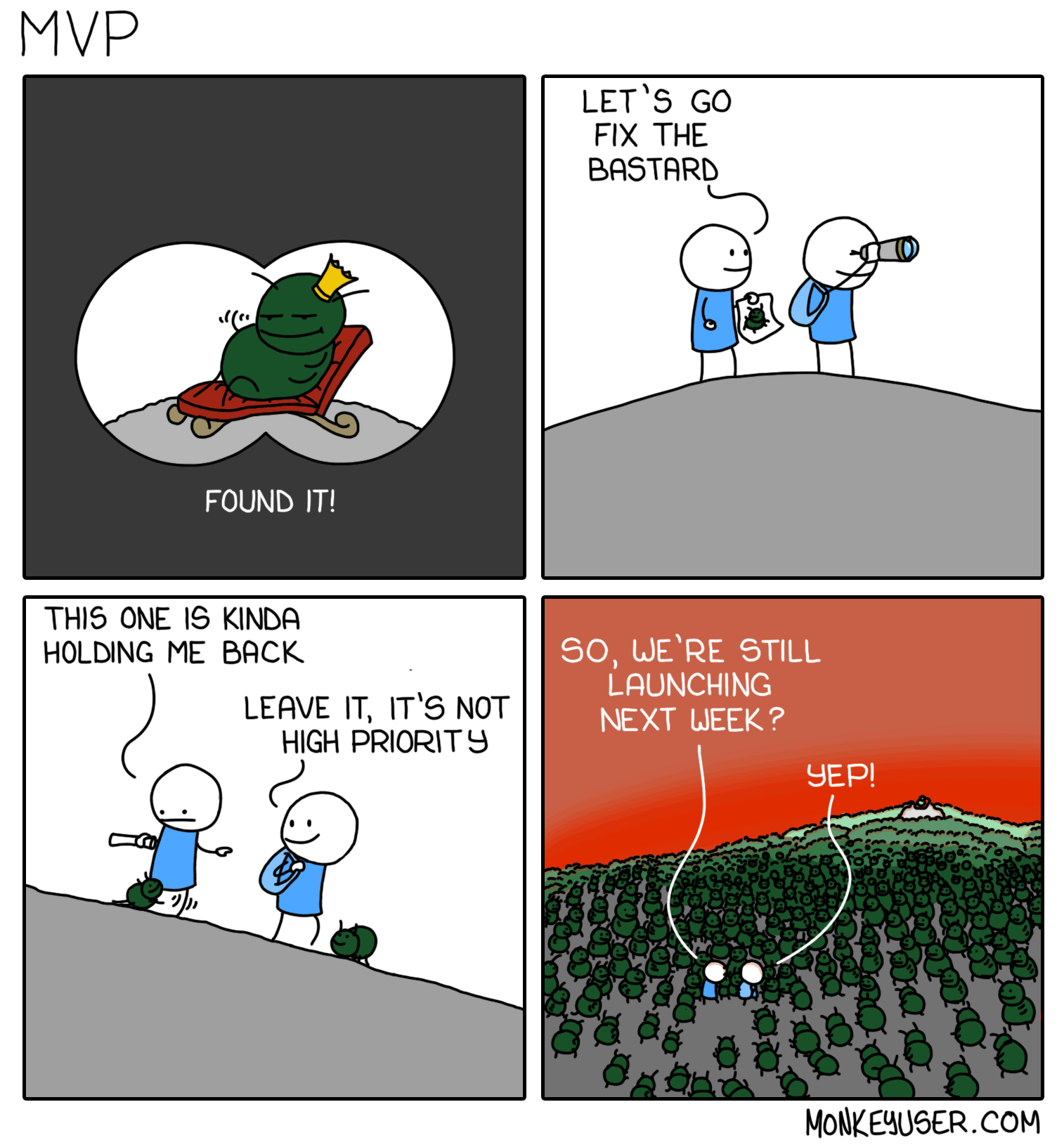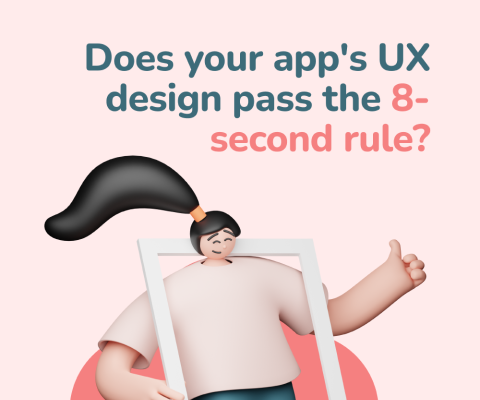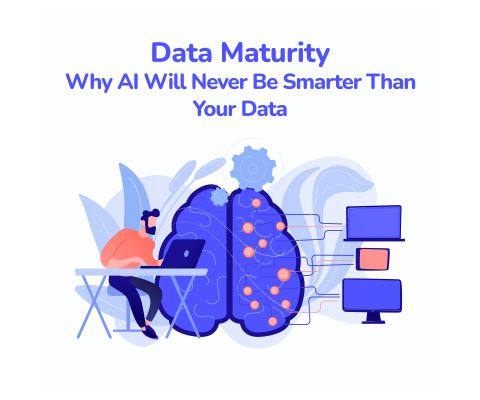May 14th, 2025, posted in learning
by Adelina
This is the first article in our five-part series on how we develop awesome cloud software. If you`re new to the series, visit:
- Part Two: Product Discovery
- Part Three: Technical Solution and MVP Estimates
- Part Four: MVP Project Planning
- Part Five: Software Development
First things first, let's have a talk. You probably have a lot of questions and so do we. The goal of the “first impression evaluation” is to see if we`re a good fit (“first impression”) and to offer you a rough estimate (“evaluation”) based on our 10 years industry experience. We want to understand your business, your customers, your short-term and long-term goals in order to gain the big picture.
To guarantee a productive first meeting, we've broken everything down into several topics. These are the things that will make us understand your app better, not just software-wise, but business-wise too. Based on your answers to these questions, we can come up with a rough estimate and then refine it through Product Discovery and planning poker, if you choose to go forward. Either way, the first one's on us :)
In short, these are the questions. Below you`ll find additional details and examples for each.
0. What`s your business all about? What market need are you trying to cover?
1. How many (new) users do you expect to have?
2. What can users do with your app?
3. What will your app look like?
4. (For the tech-savvy) Do you have any technology requirements for your app?
(0) What`s your business all about? What market need are you trying to cover?
Apps don`t exist in a vacuum. Tell us a a bit about your business, so we can understand how your app ties in with the market, your customers, your business goals.
When we get started, there are a few specific things you should provide us:
- Your visual branding guide, if you have one. This would contain your logo, how to use it, brand colors, fonts, any icons or illustrations you use in your branding.
- If you don’t have a visual branding guide but you do have some brand colors or fonts, do send us those. If you’re using custom fonts that you’ve purchased, we’ll need the font files.
- Image files of your logo, preferably .png, in other words, with no background. If you have logos in different colors (white for dark backgrounds and a dark color for white backgrounds), send us all variants, and do let us know which one you use more.
- Any design materials you might already have. If you’ve worked with a designer already, they probably left you Figma, Sketch or XD files. This is useful if you’ve already built something and you want to continue with that style.
- Any PowerPoint presentations you might have about your business. We’ll talk about it in a kick-off meeting, but it’s useful to have that information in writing as well.
Maybe you’ve been around for a while and you’ve built an app already, which you’re trying to improve or redesign. To help us get a better understanding of your app and your business, we suggest you provide us login information to your existing app. This way, we can act as potential users and even pinpoint user flow issues your app has.
(1) How many (new) users do you expect to have?
As simple as this question might sound, it's crucial in determining anything from database design and scalability issues to what features actually go into the first version of your app.
We generally recommend that our clients take a Lean Startup approach and build a minimum viable product (MVP) first. The idea behind an MVP is that it contains the minimum number of features to be a viable product that customers will pay to use. This also allows you to gradually build your user base and scale as you go. By starting small, you gather important insights regarding who your users are, how are they using your app and how likely it is to see any spikes (and hence any strain on the database and servers).
If you already have a working version of the app, this question allows us to understand how user behaviour might change when introducing new features or improving existing ones. This is particularly useful when planning a makeover for an existing app.

(2) What can users do with your app?
This is the story of how your app works from a non-technical point of view. What are the user roles (anonymous user, logged in user, regional admin, superadmin etc.) and what should they be able to do, at a minimum, with your app?
We recommend using short, present tense sentences, with each sentence describing one or more related actions. Below is an example for a time tracking app used by freelancers to manage their projects and accurately report on their work. Sending us a similar, brief description of your app can prove a great conversation starter :)
Time Tracking App
Helps freelancers keep track of the time spent on client projects.
A freelancer should be able to:
- create an account and edit account details
- see a timesheet where the freelancer can add, edit, delete and search for task
- estimate tasks
- see a history of tasks with filters
- see reports (per client, per activity type)
An admin should be able to:
- manage clients/projects for the platform, including creating clients and adding projects to clients
- manage freelancers
- manage a list of activities
- use the timesheet, same as regular user (freelancer)
- see reports, same as regular user (freelancer) - additional report: per team member

(3) What will your app look like?
We`re talking about the overall look & feel of your app, rather than specifics. Do you have certain brand identity guidelines that could help us when creating the UI designs (colour scheme, logo size and placement, fonts etc.)? If not, are there certain apps or websites you like and consider similar to what you have in mind? Give us a few examples.
If you would rather go with a theme, we often work with UI Kits and admin dashboards from our partners Creative Tim. These are based on some of the most popular design systems out there, like Material Design and Argon. Using a UI Kit or a theme guarantees a cohesive look across the entire app and speeds up design through reusable components. You can check out some of the most popular themes we've used in our projects here.
(4) (For the tech-savvy) Do you have any technology requirements for your app?
Do you already have a tech stack in mind (backend & frontend) which you consider best fitted for the job? If you already launched your MVP, tell us a bit about the frameworks and technologies used, third-party integrations, APIs or even link us to the documentation, if available.
What about deploying and hosting your app? Our suggestions usually involve Digital Ocean and Google Cloud, but we've also worked with AWS and a couple of other hosting providers.
(And now for the most important question of all) Ready to get started?
If you’re a start-up looking for a technical partner to be there for the ride, look no further. We specialize in helping start-ups validate, launch and scale their MVP. Contact us now to get your project off the ground.
















